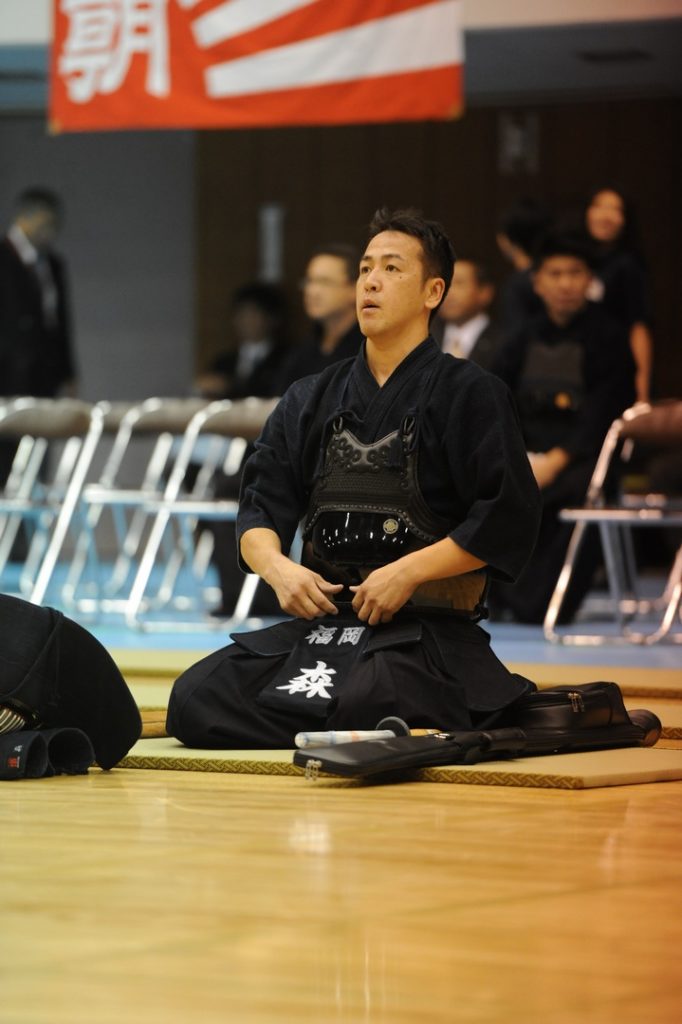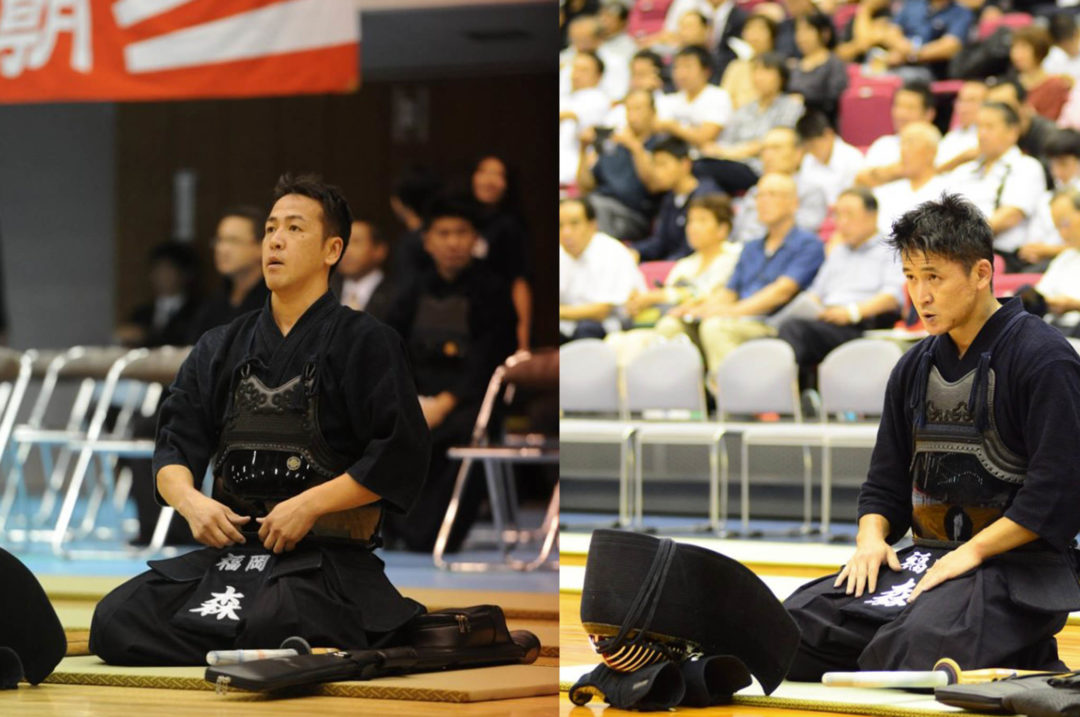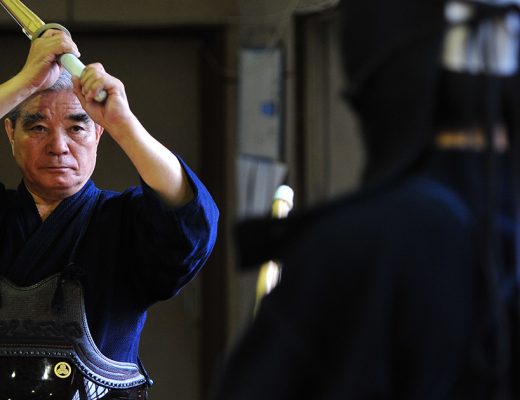2020.8 KENDOJIDAI
When training is difficult, it’s time for footwork. Top young Kenshi introduce their efforts.
Mori Daiki, 7th Dan Kyoshi

Born in Fukuoka in 1977, 42 years old. After graduating from Ohori High School of Fukuoka University, he went on to study at Kokushikan University and became a teacher. He reached best 8 in the All Japan Championship and won the National Teachers’ Championship’s individuals. He is currently a teacher at Ohori High School, his alma mater.
Importance of footwork for Kendo improvement
Footwork, which is essential to improve Kendo, requires a thorough understanding of the basics and continued effort until mastered. It takes a long time to improve through basic and fundamental movements, application, repetition, and competitive scenarios, and even skilled swordsmen often reflect on their footwork.
I would like to talk about the importance of footwork in this article, focusing on four points that I have learned and what I have found important in my experience.
The first is to strengthen your legs, feet and core. They are so important that they are called the “second heart”. Deterioration of the legs and feet comes to everyone as they get older, and this is true for me as well. However, athletes who do not decline easily are constantly working on their legs and feet. Core strengthening is also very important to eliminate the subtle wavering of various movements, improve agility, and create a posture that doesn’t get disrupted. This creates the foundation for proper posture, which is a prerequisite for Ippon.
The second is “thorough implementation of basic and fundamental movements”. I believe that we cannot compromise on this part when we teach our students.
Thoroughly practising Okuri-ashi, which is the unique movement of Kendo should be a given, and it is important to work on various basic movements such as Kirikaeshi, Uchikomi and Oikomi until they are ingrained in the body. I keep in mind the importance of striking small, sharp, fast and smooth. It is important not to have too much width between the feet. The right foot toes should be slightly rounded as if grabbing a towel and move back and forth with the big and middle toe in mind. The left foot should be drawn in sharply. Ideally, the moment you land with your right foot in front of you, you should already be pulling your left foot up. Don’t bend the left knee too much so your heel isn’t too high. Place the center of gravity in the middle. With the above in mind, I work on and teach these things.
The third is to learn footwork through application and repetition. It is important to learn how to react and use your footwork accurately in competitive scenarios in a split-second judgement and reaction, and at the same time to maintain your posture.
There are many ways to practice, but what I always remind my students to do is to be mindful of the importance of applying Seme at all times. By repeating this, students naturally acquire the Seme footwork which allows them to strike at any time. On the other hand, if you don’t have a strong feeling to attack and if you lose heart and start to feel hesitant or defensive, your feet will stop and your opponent will be able to catch an opening. I teach that feelings and feet are interlocked. Therefore, if you practice more and more techniques with Kikentai-ichi, I think you’ll find that your skill level has increased.
The fourth is to find your own unique footwork that you have acquired in Shiai. In other words, the footwork that allows you to win. Mistakes in this area will determine victory or defeat, so it is important to be aware of it and execute techniques small, sharp, fast, smooth, careful and delicate. And as you experience many Shiai, you must find your own unique footwork, which is the ultimate challenge. Of course, this cannot be done by ordinary efforts. You have to work on it day by day over a long period of time, and as you get older, you have to change your awareness of it, and finally you have to find your own unique footwork.
Above are the four points I mentioned. My four years of training at Kokushikan University became the foundation for these points. I have been teaching for 20 years now. Kendo has changed with the passage of time, but the one thing that has not changed consistently in my mind is my approach to footwork.
In the past, I told my students: “You can’t cheat the way you handle your feet, it is the manifestation of that person’s strong will and effort up until that point. To have good footwork is to have a foundation for Kendo. Without a foundation, you cannot fight. Don’t give up and work hard and persistently to master footwork, it will be a lifelong legacy for your Kendo.”
I am very sorry for the circumstances in which this article is written, and I am still in my early stages of development, but I hope it will be useful to you. I hope for an early end to this new type of coronavirus that is currently affecting Kendo and that the children will be able to play Kendo again as soon as possible.
Mori Yusuke, 7th Dan Kyoshi
The rest of this article is only available for Kendo Jidai International subscribers!





